During
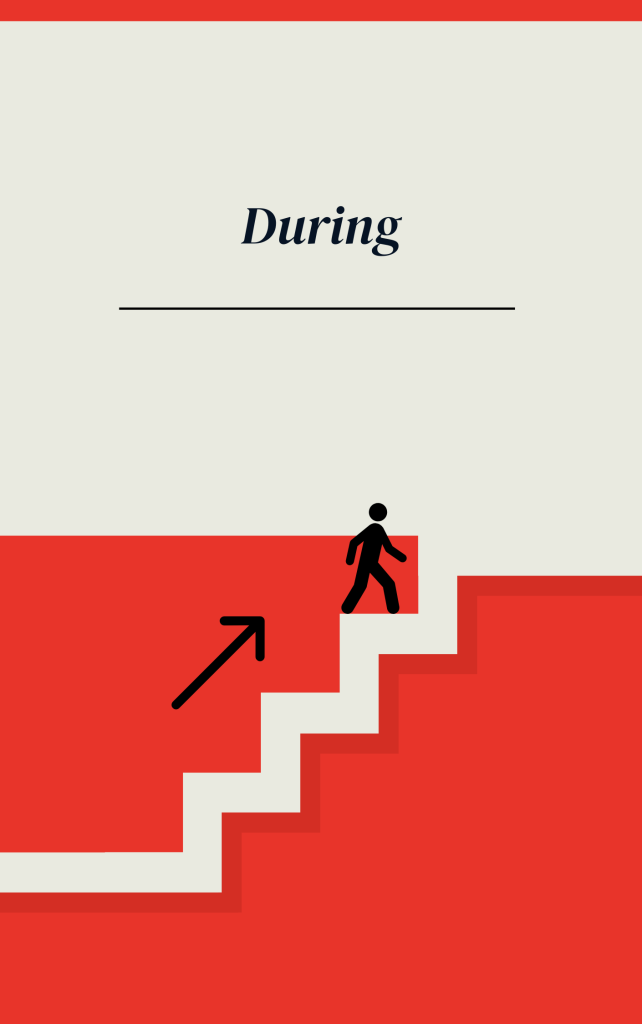 This part of the book covers the following major incidents or events, all of which I personally learned leadership lessons:
This part of the book covers the following major incidents or events, all of which I personally learned leadership lessons:
- ‘Miracle on the Hudson’
- Continental Flight 3407 from Newark to Buffalo
- Earthquake in Haiti in 2010
- Hurricane Irene in NJ
- Superstorm Sandy in NJ
- Superbowl® 48
- World Meeting of Families (Papal Visit to the U.S.)
- T.S. Irma in Puerto Rico and the USVI
So if you want to skip my New Jersey Red Cross background (well, a lot of it you will not be able to avoid it all, even if you read ahead) – and if you are reading this online, you can use the links above to jump to specific chapters. Print readers, please do not try touch-clicking on the links, you will only smudge the pages.
When I started in 2008, as an employee of the Tri-County Red Cross, each chapter was a separate legal entity with its own tax return, board of directors, and bank accounts. I started volunteering two years before in 2006 for their Disaster Action Team (DAT) which responded to home fires. These hardy volunteers still perform this role today – home fires were the most frequent Red Cross disaster response then, and it still the case today. So I knew the processes, paperwork (real work on paper forms, not computerwork), and I understood that part of the Red Cross missions. Other than on-the-job training, I had not taken any Red Cross classes, other than some introductory ones about the Red Cross and a basic sheltering overview from my training on the local CERT program.
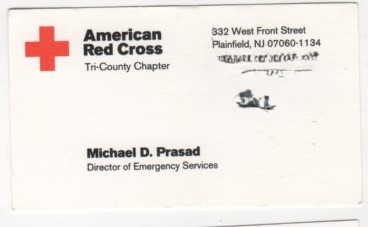
Coming in as paid staff – the Emergency Services Director – I quickly learned I also was the lead for their Service to the Armed Forces (SAF) and International Services (IS) groups. Those three (Disaster Services, SAF, and IS made up the job responsibilities for Emergency Services – and matched the Humanitarian Services offered then from the Red Cross. They were separate from Health and Safety (mostly paid courses in CPR and First Aid) and Blood Services. The chapters coordinated Disaster Services and Health and Safety instructors and course scheduling for their ‘territories’, and Blood Services ran independent of the chapters.
Service to the Armed Forces – back then
For a Chapter, supporting Red Cross Service to the Armed Forces were these major elements:
- Organizing ‘Get to Know Us Before You Need Us’ overviews to military recruiting stations and any military bases or national guard armories.
- Supporting any community ‘welcome home’ events for members of the military who return home from overseas deployments
- Helping facilitate Military Aid Society loans to active duty personnel. For the Red Cross, we were a Military Aid Society Referral Unit, or MASRU.
- Be the independent validator to the military for any servicemembers request for leave, based on a hardship. We would confirm status of a close relative in the hospital, a near-term pregnancy, or other factors which would be documented to the military for their decision to grant leave or not.
International Services – back then
For a Chapter, supporting Red Cross International Services were these major elements:
- When major incidents occurred in other countries (for example, an earthquake in Europe) and residents from our territory could not reach their loved ones, we would provide them with either the U.S. State Department contacts (for Americans) or connect them to the national headquarters’ Restoring Family Links (RFL) group
- Holocaust Tracing. Many folks do not know that the International Committee of the Red Cross (ICRC) through its International Tracing Service, has all of the prisoner records of the Nazis from World War II. The Nazis spread these folks all over the globe, not just in Europe. And while I hesitate to give them credit for anything except pure evil, they were meticulous record-keepers. The Red Cross assisted in helping find living relatives who were adversely impacted by this extinction level event.
Initial Lessons Learned
- I learned a lot more about Red Cross finances and paperwork. When I started, the chapter had moved away from hotel vouchers to issuing a debit card to clients for assistance after a small scale disaster. I did all of this via phone calls and paperwork. The chapter executive managed the bank account directly, along with the Health and Safety lead, since that was also money moving into and out of the chapter.
- I learned about Red Cross Disaster Services training. A lot of it was held in other chapters in New Jersey. We were such a small group, we did not have too many instructors of our own. Back then, when you finished a class, you got a card instead of a certificate. These cards were produced by the chapter hosting the training class. Sometimes they would be hand-printed with the info and other times it was typed in on a device called a typewriter. The cards came on a sheet of eight (or 10, I can’t recall) – but you would never think to put them through a printer unless you had all of them filled out in your program – you could not run the sheet through a printer a second time without jamming. Until we got rid of the cards, I always had a typewriter on hand.
- I learned our chapter was organized as a merger of former chapters from World War II and before. By 1945, there were thousands of Red Cross chapters across the United States.
- I learned it was really good to be part of a team, with a strong experienced leader who was already networked into the system (whatever system that was), and with mentors who would help me achieve whatever leadership potential I desired. (Thanks, DN, NR, and CK! – and of course extra thanks to GH).
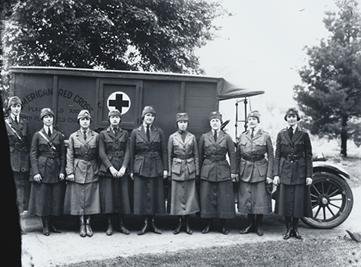
In the nine years I was an employee, we merged four times. First, the Tri-County Chapter merged with the Westfield-Mountainside chapter. Then with the Princeton Chapter to form a Central Jersey Chapter (I think that is what it was called). At some point along the way, the national organization had all the chapters organized into one bank account, one tax return, etc., becoming much more centralized for disaster services (maybe not for everything else).
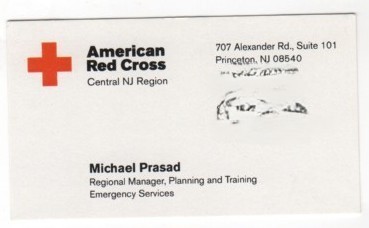
The next merger was to a regional construct with the chapters in the northern part of the state (I think the demarcation like was Interstate 195, but I am not sure.
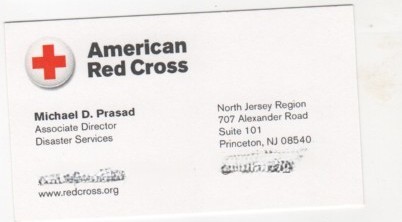
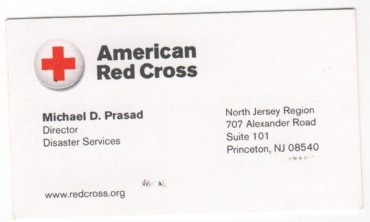
Finally, in 2015 we merged the two Regions into a single one for the entire state, which is the way it exists now. In some ways, we were lucky – some states are part of multi-state Regions and others still have multiple Regions within a single state. Both of those models are more challenging when dealing with county and state governments, in my opinion. Leadership aligns with leadership many times.
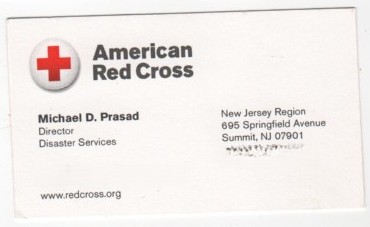
One of the biggest differences between the bank mergers I was involved in and the Red Cross chapter/region ones was my job was never in question, never on the chopping block. That was because I was considered essential. Yes, there were staffing cuts with the Red Cross mergers and more importantly expense cuts as they consolidated real estate holders. It costs quite a bit of money to maintain a building even if you own it outright and don’t pay real estate taxes. And most of these buildings were older, smaller and not fully accessible to people with disabilities.
What happened over time is the flow and work of volunteers became decentralized – even within a single chapter (and back in the day, most towns had their own Red Cross chapter) – and candidly for Disaster Services, if you did not have a major disaster to keep everyone active and involved, the volunteerism would wane. Ideally, it helps quite a bit at a local home fire to have local volunteers from the Red Cross respond. They get there faster (no lights and sirens for us!) and they know the community more closely, more consistently. They may even know the first responders directly, too. But what if there are not enough regular responding volunteers from the communities which have the most home fires? And how do you keep the volunteers who live in the communities which do not have frequent disasters more active? You connect these two needs together. Thus, a chapter-wide response is a good model. We would have responders from town A go to fires in Town B – and vice-versa. Generally if the fire (or minor flooding, for example) was big enough to impact a large number of families (at that time 10 or more families, or 25 people up), we would open a shelter. That could be an incident where neighboring Chapters help each other, too. When the major flooding, or national-level impact/awareness incidents occurred, we got help from national – which could be volunteers from anywhere in the United States and also paid staff from Washington, D.C.
The book chapters which follow in this ‘During’ part, highlight many of those incidents of significance – and they all certainly provided leadership lessons for me.
Disaster Action Team
Community Emergency Response Team
Service to the Armed Forces
International Services
Military Aid Society Referral Unit
Restoring Family Links
International Committee of the Red Cross
